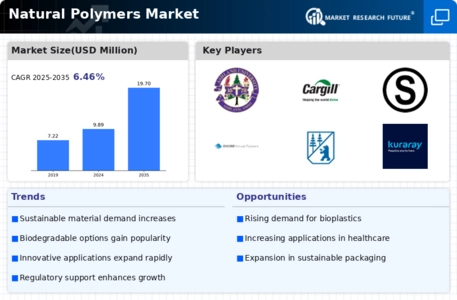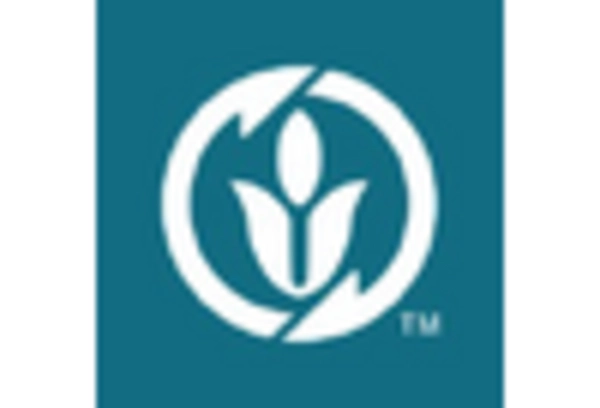Natural polymers Market is characterized by a high level of competition, with many players emerging for market share. The top 10 companies in the market account for a significant market share of Natural polymers Market. The competitive landscape of Natural polymers Market is dynamic, with companies constantly innovating and expanding their product offerings. Despite the challenges, there are several factors that are driving growth in the Natural Polymers Market. These include increasing global awareness and demand for sustainable and eco-friendly products.
The Natural Polymers Market is expected to witness significant growth in the coming years, owing to increasing consumer demand for sustainable and environmentally friendly products across various industries. The market is benefiting from the development of new technologies. The key players in the Natural polymers Market include Ashland, Cargill, Incorporated, Dow, Encore Natural Polymers, Borregaard, CP Kelco, Roquette Freres, Kuraray, Archer Daniels Midland, Ingredion and JRS Pharms. These companies compete based on product quality, innovation, price, customer service, and market share.
Companies also engage in various strategic initiatives, such as mergers and acquisitions, new product launches, partnerships, joint ventures, and expansions, to enhance their market position and expand their product portfolio. Companies are also focusing on developing new and innovative products that meet the specific needs of their customers. Companies will need to continue to innovate and expand their product offerings to remain competitive. For instance, on 16 September 2021, Cargill has announced the opening of its new, cutting-edge pectin production facility, located in Bebedouro, Brazil.
The plant, which represents a USD 150 million investment, significantly expands the company’s ability to meet growing global demand for label-friendly texturizing ingredient.
: Environment, social and governance (ESG) is embedded in Ashland’s strategy and operating plans. It is both an impetus and growth opportunity, turning the potential for change into action and driving real business growth. Under its commitment to the Paris Climate Accord and Science Based Targets, and the United Nations Global Compact and Sustainable Development Goals, it is operating with greater transparency and aligning resources to help solve some of the world’s most complex challenges. Ashland’s conscious-to-cutting-edge innovation strategy includes increasing the speed and impact of new product innovations while embracing and integrating ESG in all that they do.
The company launched more than 30 new products in FY22, and 83 percent of its product portfolio is natural, nature-derived, biodegradable or sustainable in-use. Though smaller than some of its peers, Ashland’s targeted approach to its value chain and its agile business model mean it has a unique matrixed approach to how it impacts environmental, social and governance issues. This materiality assessment shows Ashland’s holistic approach to managing the needs of people, planet and profit.
Dow's strategy for Corporate Social Responsibility (CSR) integrates deeply into its overall sustainability ethos, extending beyond traditional community projects to encompass a holistic approach to responsible corporate citizenship and environmental stewardship. This commitment permeates every facet of Dow's business operations and presence in the sub-region, reflecting a dedication to sustainability principles.At Dow, CSR initiatives are strategically aligned with broader programmatic goals, emphasizing not just financial contributions but also leveraging resources, technology, and employee volunteerism to maximize positive impact.
This comprehensive approach underscores Dow's role as a leader in promoting a sustainable society, guided by ambitious goals set for 2025 and beyond.


















Leave a Comment